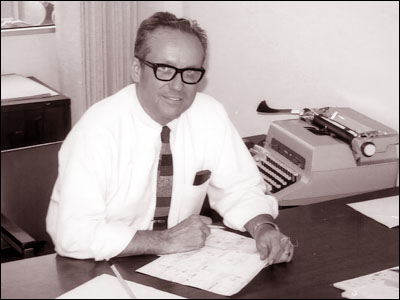
This is, as you can see, Part 4 in a series. If you haven't read Part 1, Part 2 or Part 3 yet, you might wanna.
In 1938, Dell Publishing Company entered into an arrangement with Western Printing and Lithographing Company of Racine, Wisconsin to jointly produce comic books. Prior to this, there had been comics from Dell. Depending on one's definition of a "comic book," you could look back as far as 1929 and The Funnies, which was more like an insert in newspapers that was reportedly sold sometimes without the newspaper.
There are comic book (and strip) historians who have practically come to blows arguing about what makes one publication worthy of being called "the first comic book" and I don't want to leap into that ring. But The Funnies was at some point one of the first, if not the first comic books. Western, meanwhile, was printing and in some cases also publishing all kinds of books and magazines for all sort of clients. Eventually, all the comic books Dell published were printed by Western, and Western also prepared the contents of those comics.
This is something that confuses a lot of people. Dell "published" in the sense that they financed the line, decided what would be in it and arranged for distribution of the comics. In later years, Dell was its own distributor.
But Dell did not hire editors, writers, artists or anyone like that, nor did Dell hold the licenses to produce comic books of the Walt Disney characters, the Warner Brothers characters, the Walter Lantz characters, the Edgar Rice Burroughs characters, etc. Western hired all those folks and Western held all those licenses. Under those licenses, Western also produced kids' books, coloring books, activity books, puzzle books and all sorts of other publications for younger audiences. Dell was only involved in the comic books…
…and only in the newsstand comic books. Under the terms of the Dell/Western contract, Western was free to do comic books for non-newsstand sales. For instance, Western produced a great many comics that were educational giveaways like this one…

There were a lot of these. They also printed in staggering numbers, issues of what was various referred to as Boys' and Girls' March of Comics or sometimes just March of Comics. Featuring many of the same properties they were then handling for Dell Comics, Western produced issues of this giveaway comic. Here's one they did using their then-current license to do comic books of cowboy superstar Roy Rogers…

And they didn't all say "Sears" on this one. Sears would order a half-million copies and Blue Bird Shoes would order a half-million copies and Peter Pan Shoes would order a ton of them, etc., all the same inside, most of them imprinted with the name of the retailer or product. When I was eight, I used to get them when my parents bought me Stride-Rite shoes.
Again, Dell was not involved in these. The contents would be assembled out of offices that Western had in Los Angeles and in New York — the same offices that were creating the contents of the Dell comic books. Each office would buy scripts and artwork from local freelancers.
This is something else that some folks don't know about comics produced by Western. There were two separate offices with separate editorial staffs and while a few of the contributors sold material to both offices, most worked for one or the other. At times, the two offices almost functioned like separate companies and, as we'll see, they sometimes had serious disputes.
I am most familiar with the Los Angeles office, which moved from time to time. The first one was somewhere in Downtown L.A. In the fifties, they were in a fairly large building on Santa Monica Boulevard in Beverly Hills, a few doors west of the world-famous Friars Club. My family and I used to drive by it all the time…and at age eight, I knew — I don't know how I knew but I knew — that that's where many of the comic books I loved came from.
I was never inside that office. The first L.A. office of Western Publishing that I visited was in the Max Factor Building on Hollywood Boulevard, directly across the street from the even-more-world-famous Grauman's Chinese Theater. I worked for the senior editor there, Chase Craig, and from his window, you could look right across the boulevard at the courtyard with the stars' footprints.

That's Chase Craig in that office. Later when the company downsized, they moved to a small office building on Forest Lawn Drive in Burbank, not far from the cemetery that bears the street's name.
From the last two locations, they were very close to the Disney Studios, to the Hanna-Barbera building, to the Warner Brothers lot…and to other firms that controlled the characters that Western licensed. Writers and artists who worked at all those locations moonlighted for Western and could easily drop off work or pick up checks at their offices.
With rare exceptions, the Los Angeles office did all the Disney, Walter Lantz, M.G.M., Warner Brothers, Edgar Rice Burroughs, Hanna-Barbera and many other comics. The New York office did Little Lulu, Jay Ward, Terrytoons, Star Trek, Dark Shadows, King Features, Twilight Zone, Boris Karloff, Fat Albert and many others. Magnus, Robot Fighter and Pink Panther were L.A. books. Doctor Solar and Turok were New York books.
There were some genuine differences between the two offices and some intra-company arguments. They weren't huge when the firm was producing comics for Dell but in 1962, Dell and Western decided to get a divorce. We'll be discussing that in our next installment.